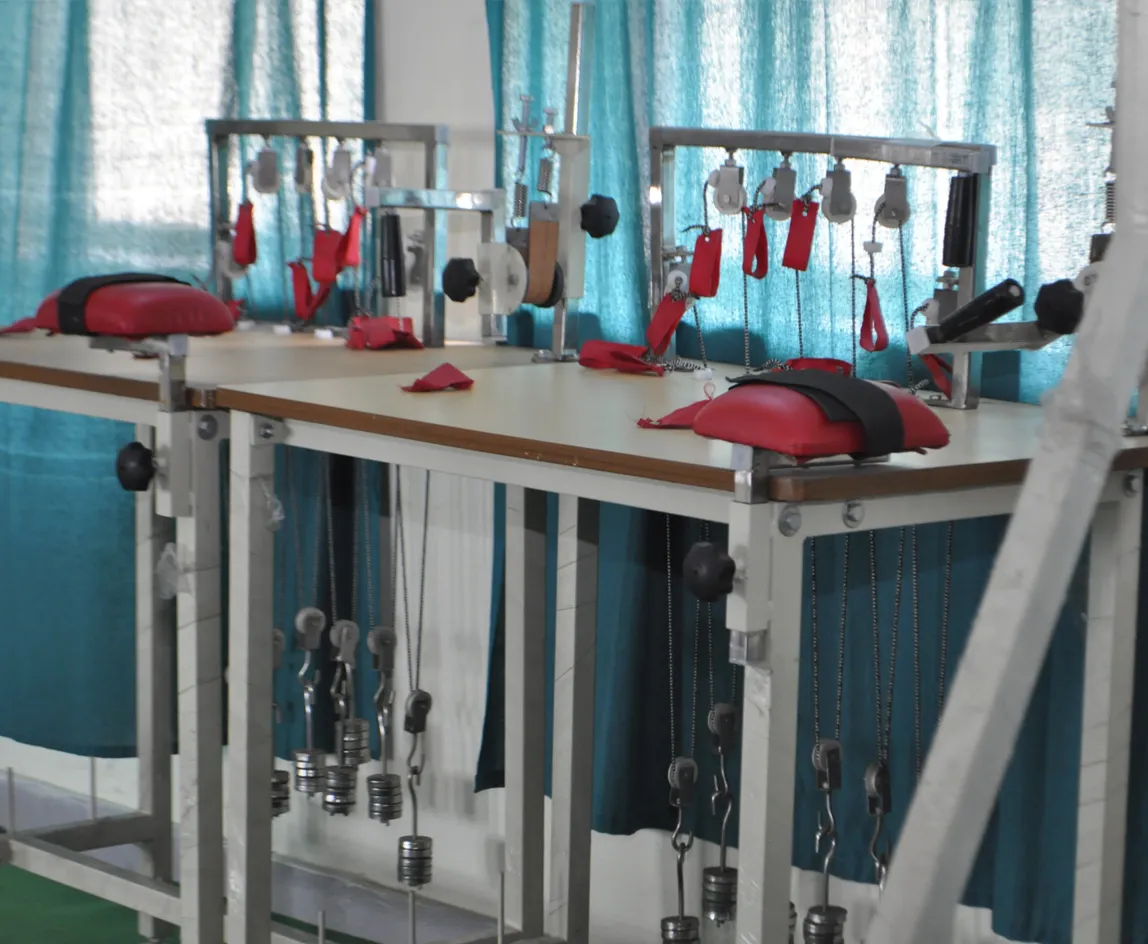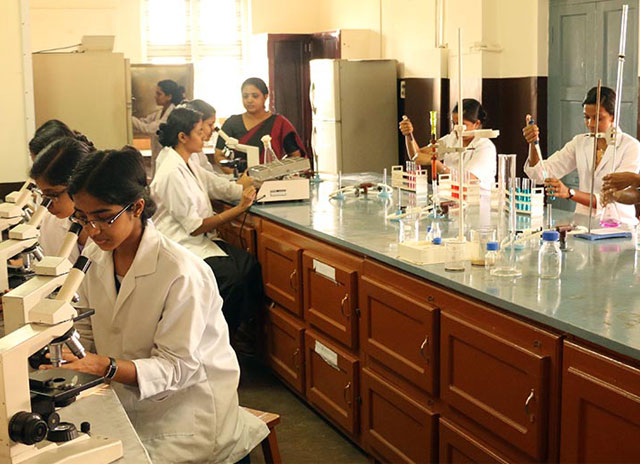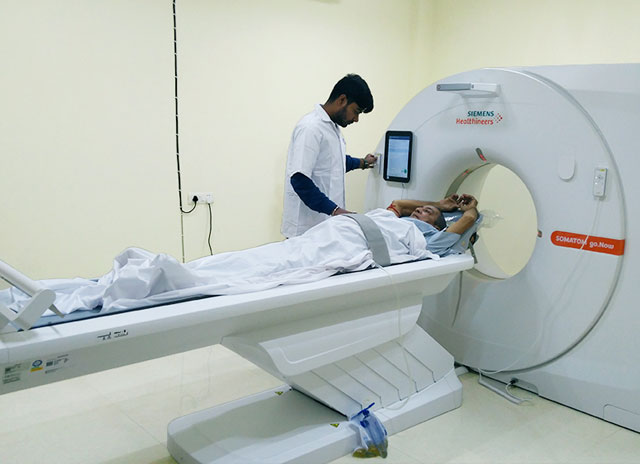
About College of Paramedical Sciences
Prepare for Lifesaving Medical Practice.
At COER College of Paramedical Sciences, the institution opens the door to a world where excellence in education intersects with the dynamic and ever-evolving landscape of healthcare.
The college has a steadfast commitment to nurturing the next generation of highly skilled paramedical professionals who are poised to make a substantial impact within the healthcare ecosystem.

The core ethos at COER College of Paramedical Sciences is deeply rooted in the pursuit of excellence. The institution upholds the highest academic standards, ensuring that students receive a comprehensive and cutting-edge education that empowers them to excel in their chosen field of paramedicine.
With unwavering dedication to quality, the college aims to provide a transformative educational experience that will propel students towards a fulfilling and impactful career.

USPs
Collaboration across different paramedical disciplines of the hospitals in and around Roorkee and Haridwar.
Experienced Faculty Members
Titles
Research Journals
Medical Literature
8 state-of-the-art laboratories for our paramedical programs, providing students with cutting-edge facilities and resources for hands-on learning and practical skill development
Simulated Patient Care: Our laboratories are designed to simulate patient care scenarios to handle various medical situations, from routine procedures to emergency responses, all in a controlled and safe environment.
VISION
To be a leading department in paramedical studies, advancing the field through innovative education, research, and practice to enhance healthcare quality globally.
MISSION
- M1: To develop professionals with advanced competences , equipped to address societal and healthcare needs and global challenges.
- M2: To deliver education integrating the latest knowledge, analytical and experimental skills through modern training methods and strong diagnostic measures.
- M3: To provide education that incorporates up-to-date knowledge and practical skills through advanced training and research.
- M4: To cultivate an environment that encourages research in Paramedical sciences
- M5: To impart comprehensive knowledge and uphold professional conduct and ethics in health service
- M6: To serve the community with high-quality healthcare services and foster a supportive learning environment
Value & Strength
PROGRAM EDUCATIONAL OBJECTIVES (PEO)
- PEO1Graduates will demonstrate proficiency in conducting laboratory tests and procedures, adhering to quality standards and regulatory requirements to support accurate diagnosis and effective patient care.
- PEO2Graduates will exhibit professional ethics, communicate effectively with healthcare teams and patients, and contribute to a collaborative healthcare environment, ensuring the delivery of comprehensive and compassionate care.
- PEO3 Graduates will engage in continuous professional development and stay abreast of advancements in medical laboratory science and technology, adapting to evolving healthcare practices and innovations.
PROGRAM OUTCOMES (POS)
BMLT (Bachelor of Medical Laboratory Technology), is a program that trains students in various aspects of medical laboratory science. Some common outcomes of a BMLT program may include:
-
Knowledge and Skills
Graduates should possess a solid understanding of medical laboratory science principles, techniques, and procedures. They should be skilled in conducting laboratory tests, analyzing samples, and interpreting results accurately.
-
Laboratory Techniques
Students should be proficient in using a wide range of laboratory equipment, instruments, and technologies commonly used in medical laboratories. This includes knowledge of specimen collection, handling, and processing techniques.
-
Diagnostic Ability
Graduates should have the ability to correlate laboratory findings with patient information to assist in the diagnosis, treatment, and monitoring of diseases. They should be capable of identifying abnormal test results and recognizing potential errors or discrepancies.
-
Quality Assurance
BMLT graduates should understand the importance of quality assurance and quality control measures in the laboratory. They should be familiar with standard operating procedures, safety protocols, and regulatory requirements to ensure accurate and reliable test results.
-
Communication and collaboration
Effective communication skills, both verbal and written, are essential in a medical laboratory setting. BMLT graduates should be able to communicate test results and findings to healthcare professionals and interact with patients when necessary. They should also understand the importance of teamwork and collaboration within a multidisciplinary healthcare environment.
-
Professionalism and ethics
BMLT programs emphasize the importance of professional conduct and ethical behavior in medical laboratory practice. Graduates should demonstrate an elevated level of integrity, confidentiality, and respect for patient rights and privacy.
-
Practice skills development
Laboratory courses aim to develop students’ practical skills related to the subject matter. This may include techniques such as conducting experiments, using laboratory equipment, data collection, and analysis.
-
Application of theoretical concepts
The laboratory setting allows students to apply the theoretical concepts learned in lectures or textbooks. They can observe how these concepts are put into practice, which enhances their understanding and reinforces theoretical knowledge.
-
Experimental design and execution
Students learn how to design and execute experiments, including formulating research questions, planning procedures, identifying variables, and collecting data. This helps them develop critical thinking and problem-solving skills.
-
Data analysis and interpretation
Laboratory courses often involve analyzing and interpreting experimental data. Students learn how to analyze data using appropriate statistical methods, draw conclusions, and present their findings effectively.
-
Collaboration and teamwork
Laboratory courses often require students to work in teams or groups. This fosters collaboration, communication, and teamwork skills, as students learn to coordinate efforts, share responsibilities, and solve problems together.
-
Safety protocols and ethical considerations
Laboratory courses emphasize the importance of safety protocols and ethical considerations in conducting experiments. Students learn how to handle hazardous materials, follow safety guidelines, and consider the ethical implications of their research.
-
Documentation and reporting
Laboratory work involves documenting procedures, observations, and results accurately. Students learn how to maintain a laboratory notebook. Draft scientific reports and communicate their findings in a clear and organized manner.
PROGRAM SPECIFIC OUTCOMES (PSOS)
- PSO1Students will possess a solid foundation in laboratory techniques, including specimen collection, handling, and analysis across various disciplines such as Pathology, clinical biochemistry, Microbiology, Immunology, and molecular diagnosis.
- PSO2The students will be familiar with a wide range of laboratory instruments, equipment, and technologies commonly used in clinical diagnosis.
- PSO3Students will be knowledgeable about quality control measures, quality assurance programs, and regulatory guidelines to maintain accuracy and precision in laboratory testing.
PROGRAM EDUCATIONAL OBJECTIVES (PEO)
- PEO1 Understanding the basic concepts, theories of applied sciences (physics, chemistry, Anatomy, physiology, biochemistry, pathology) relevant to radiological imaging techniques.
- PEO2 Remembering the relationship between physics and Radio diagnosis & modern imaging
- PEO3 Understanding provisions for radiation safety by various national & international regulatory bodies and applying quality assurance measures, safety procedures and maintenance of radiological equipment.
- PEO4Understanding of health care organization in India & basic medical terminology.
- PEO5Operating all radiological and imaging equipment independently and perform the image processing in X-Ray, Fluoroscopy, Computed Tomography ,Dual Energy X-Ray Absorptiometry (DEXA),Mammography, Digital Subtraction Angiography, Magnetic Resonance Imaging, Ultrasonography, Nuclear Medicine
- PEO6Analyzing the protocols in Radiological Procedures & evaluating the factors affecting technical quality of images and various pathological conditions.
- PEO7Creating & Formulating plan for handling patient with drugs & equipment in general As well in emergency situation.
PROGRAM OUTCOMES (POS)
-
Cooperation with other members of the health team.
-
Sense of responsibility as a team member
-
Interpersonal communication skills.
-
Empathetic attitude towards the patients.
-
Positive behavioral approach towards patients as well as persons with disabilities.
-
Research attitude to rationalize the treatment options.
-
Importance of referral system.
-
Individual and team work Function effectively as an individual and as a member in health care teams, and in multidisciplinary settings in health care profession.
-
Documentation and reporting of patient effectively.
-
Life-long learning recognizes the need for, and has the preparation and ability to engage in independent and life-long learning in the health care sector.
PROGRAM SPECIFIC OUTCOMES (PSOS)
- PSO1Students will possess a solid foundation in laboratory techniques, including specimen collection, handling, and analysis across various disciplines such as Pathology, clinical biochemistry, Microbiology, Immunology, and molecular diagnosis.Students can be seen working as CT scan technologists in hospitals, clinics, diagnostic centers.
- PSO2The course provides in-depth knowledge of radiography and involves various methods of taking pictures of internal body parts/organs for clinical examination purposes.
- PSO3Students can get placed for different jobs like radiation protection diagnostic radiographer X-ray technician.
PROGRAM EDUCATIONAL OBJECTIVES (PEO)
- PEO1 Perform functional assessment of different musculoskeletal as well as neuromuscular impairments. Evaluate posture, postural problems and reeducation of posture.
- PEO2 Evaluate and recording of joint range of joint motion. Apply joint mobilization and different manipulative techniques on patients having joint disorders or derangements.
- PEO3 Evaluate respiratory issues and application of retraining techniques.Strength enmuscles following a different range of musculoskeletal problems.
- PEO4 Evaluate and grading of muscle strength. Evaluation ofwork related problems and application of ergonomics.
- PEO5 Evaluate and training of muscle coordination. Evaluate and training of balance.
PROGRAM OUTCOMES (POS)
-
Cooperation with other members of the health team.
-
Sense of responsibility as a team member.
-
Interpersonal communication skills.
-
Empathetic attitude towards the patients.
-
Positive behavioral approach towards patients as well as persons with disabilities.
-
Decision making independently with respect to the treatment.
-
Research attitude to rationalize the treatment options.
-
Importance of referral system.
-
Individual and team work Function effectively as an individual and as a member in health care teams, and in multidisciplinary settings in the healthcare profession.
-
Communicate effectively and understand the various diseases, disorders, condition of the patients and client with society at large, such as, being able to comprehend and write effective reports and plan treatment and documentation, make effective treatment goals, and give and receive clear advice for rehabilitation of patients.
-
Life-long learning recognizes the need for, and has the preparation and ability to engage in independent and life-long learning in the health care sector.
PROGRAM SPECIFIC OUTCOMES (PSOS)
- PSO1Evaluate and assess different musculoskeletal, neuromuscular cardiovascular & respiratory and other conditions.
- PSO2Evaluate issues and application of retraining techniques. Strengthen muscles following a different range of musculoskeletal problems.
- PSO3Evaluate posture, postural problems and reeducation of posture.
- PSO4Evaluate and grading of muscle strength, Apply joint mobilization and different manipulative techniques on patients having joint disorders or derangements.









